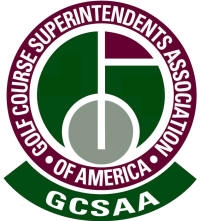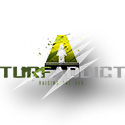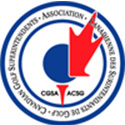The Value of a Qualified Equipment Manager
Printed: USGA Green Section
Year: November 2010
Title: The Value of a Qualified Equipment Manager
written by Todd Lowe – USGA Agronomist and Stephen Tucker
Golf course management has changed considerably. As mower technology, turfgrass genetics, and irrigation systems have evolved, so too have golfer expectations for year-round premium turf conditioning. Today’s golf course superintendents must consistently provide championship-like playing conditions while developing strategies to protect the environment. To accomplish this task, key staff at the course have taken on more responsibility so that few golf courses now operate without assistant golf course superintendents and equipment managers. In fact, many courses also have second assistants, integrated pest managers, and irrigation and equipment technicians. It takes a load off the backs of golf course superintendents to have turfgrass equipment managers (TEMs) who implement preventative maintenance on golf course equipment so that everything runs smoothly. Their basic function has not changed, but the way good TEMs perform their tasks adds tremendous value to golf courses. This article sheds some light on this often overlooked position and highlights the integral role of qualified TEMs and the value they provide to the industry.
TURF HEALTH AND CONDITIONING
Golf is a game played on turfgrass that is maintained to a certain level of firmness, speed, uniformity, and color, depending on golfer expectations and available resources. A well-maintained golf course creates an enjoyable golfing experience and is an asset to real estate value and wildlife alike. Long gone are the days where rabbits or sheep were relied upon to mow the turf. Sophisticated equipment fleets oftentimes exceed $1 million for an average golf course. This expensive fleet must be maintained, and the TEM’s primary role is to make certain it is reliable and operating well. A sharp, properly-adjusted mower is necessary to cut turfgrass leaves evenly, at the correct height, and with minimal impact to turf health. Conversely, dull or poorly adjusted mowers bruise turf leaves, create a frayed appearance, and decrease turf quality. Injured turfgrass is more susceptible to disease and can increase the need for fungicides. This factor is particularly important on golf courses maintained at higher levels, as there is less room for error. Equipment must be properly maintained on a regular basis or repairs are more likely. When repairs are necessary, a good TEM with a well-stocked parts inventory and correct diagnosis can quickly repair equipment and lessen equipment downtime. Mower downtime takes a toll on golf course quality, as the turf becomes overgrown and unkempt. The result is scalping and an overabundance of clippings once regular mowing resumes. This decreases turf health and quality, and, in turn, results in declining golfer satisfaction.
EQUIPMENT CARE
Although upkeep and repair of equipment is the key function of a TEM, few course officials truly appreciate their essential role and the necessary wealth of knowledge it takes to maintain an entire golf course equipment fleet. Consider that several technicians often are required to maintain your personal automobile, yet there is generally only one TEM at each golf course. Not only must equipment managers understand basic engine, automotive, and electrical principles, they also must know how to maintain sophisticated hydraulic-driven cutting units and be proficient at other tasks, such as welding. To make certain that equipment functions properly, preventative maintenance practices must be implemented to extend equipment life, prevent breakdowns and increase worker safety. Preventing major repairs not only saves money for the golf course by reducing the cost of overtime, new components, and overnight shipping of parts, it improves morale when equipment managers plan necessary repairs instead of scrambling to fix broken-down mowers. Good morale is vital to a productive staff, but it is particularly important during major golf events. Few things are more debilitating in a golf course operation than to have equipment malfunction prior to or during championships or tournaments. A major event allows the maintenance staff to shine, but inopportune breakdowns increase stress and weaken staff morale.
ADDITIONAL SKILLS
An efficient TEM must possess proficient organizational and computer skills. Complete equipment inventories with operator manuals are necessary so that recommended services can be developed and service logs created. Such charts must be kept up to date, and these are often done with various computer programs. Preventative equipment maintenance also requires good communication skills, as golf course managers must be educated on its value so that necessary funds are set aside. Equipment managers must communicate effectively with golf course staff to relay potential problems before they become major problems. Conversely, TEMs with poor communication skills can potentially create antagonistic working conditions. Staffs in such conditions often do not report equipment problems in an effort to minimize conflicts. Unreported equipment malfunctions decrease efficiency and increase the likelihood of major problems down the line. Innovation is another key factor that good TEMs possess. There are many occasions when the equipment has to be modified to complete a certain task. Whether it is adjusting cutting units to prevent scalping or building new tools, innovation is a large part of a good TEM routine. Such innovations are sometimes incorporated into newer equipment designs, and often TEMs are involved in focus groups to help manufacturers shape future equipment needs.
COST SAVINGS
What if you were told that by having a qualified TEM you could lease more equipment and pay less, even though there was a price increase? Leases are based on residual values, as rates are configured on the equipment’s value at the end of the lease, as compared to the actual sale price. This figure is based largely on how well the equipment was maintained. The determining factor is the amount of care equipment managers put into the equipment. Detailed records at the end of an equipment lease create more value for that equipment, which allows a dealer to sell it at a higher premium. This results in a significant saving for the golf course. In some cases, a TEM’s salary can be justified on the amount of money saved on the lease. This scenario is no different when purchasing equipment; the longer the equipment is in good operating condition, the less money is spent on new equipment.
One of the greatest values of having a properly-trained TEM is the saving in equipment repair and maintenance. There are many “parts changers” in the golf course industry who repair equipment based on seeing a problem and replacing a part without diagnosing the cause. The difference between a trained technician and a parts changer is that the technician sees the issue, fixes it, and locates the primary problem to reduce future repairs. Another added value is the help a good TEM can provide to evaluate equipment purchases for the course. Many factors determine which equipment is appropriate for a particular golf course, including maintenance standards, terrain, functionality, staff size, and safety. For example, some cutting units are great for certain applications, while others are not. Most manufacturers produce similar equipment, but factors such as horsepower, rollers, reel blades, costs, and technical/sales support are important for keeping the fleet operational. A good TEM understands each factor before making major purchases.
FACILITY MAINTENANCE
Historically, golf course maintenance facilities were barns that simply protected equipment from poor weather. Today’s facilities not only provide ample equipment storage, but also have space for equipment care (preventative maintenance, reel grinding, repairs), equipment parts inventory, training, offices, pesticide storage, irrigation computer controls, weather monitoring, bathrooms, lockers and other amenities. Maintaining an organized facility takes a diligent effort from the golf course superintendent
and the entire staff. However, a good TEM plays a vital role in the facility upkeep by organizing equipment storage/repair areas, and maintaining an organized offi ce and parts inventory. Some TEMs are also referred to as facility managers, where maintaining the entire maintenance facility is just one component of their job description. A clean, organized facility is a significant value to the golf course operation, as it gives the staff a sense of pride in their workplace that is carried out onto the golf course and promotes professionalism by the staff. This not only improves golf course conditions, but also aids in staff retention and morale, as workers feel they are a valuable asset to the golf course and its operations. An organized facility also improves staff efficiency, as they know exactly where each tool is kept. Knowing the placement of each piece of equipment, and the fact that it is in good working condition, saves time when workers prepare for daily tasks. Conversely, a disorganized or messy facility causes workers to scramble each morning and waste time looking for tools or functioning equipment. Workers take greater care of the equipment in an organized facility as compared to one where equipment is stored haphazardly.
CLOSING
Golf course maintenance requires several key individuals, including TEMs. While many TEMs have operated in obscurity and have long been perceived as simple parts changers or mechanics, educated and professional TEMs are extremely valuable and necessary components of successful golf course operations. Parts changers can help keep a golf course running, but a qualifi ed TEM maintains equipment and facilities and helps save money, improves worker morale, and provides a better product on a consistent basis.














1 Comment
Darden Nicks
March 09, 12:09Stephen is a tremendous wealth of knowledge and has foresight as a leader in our industry! Great job!